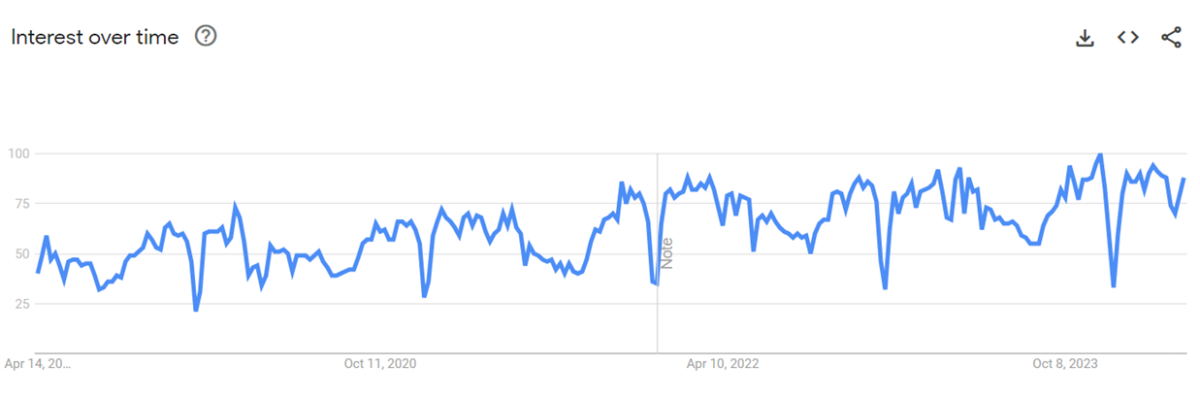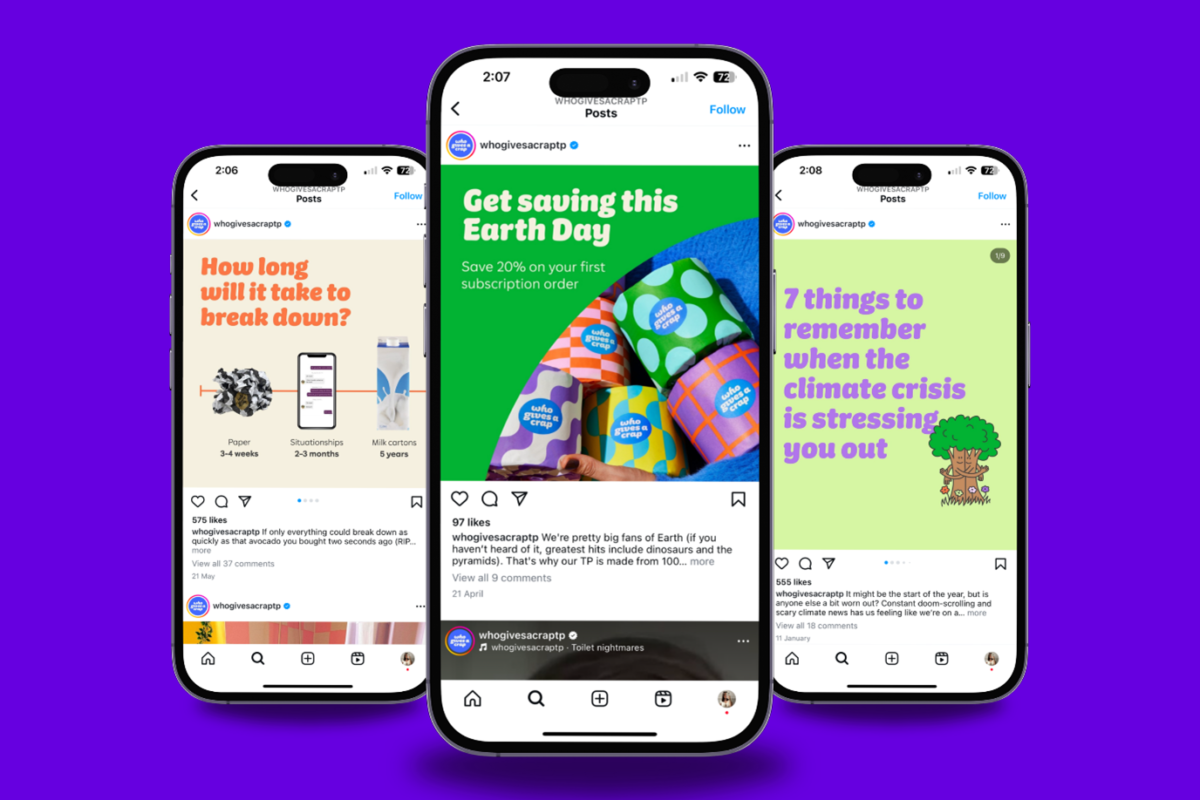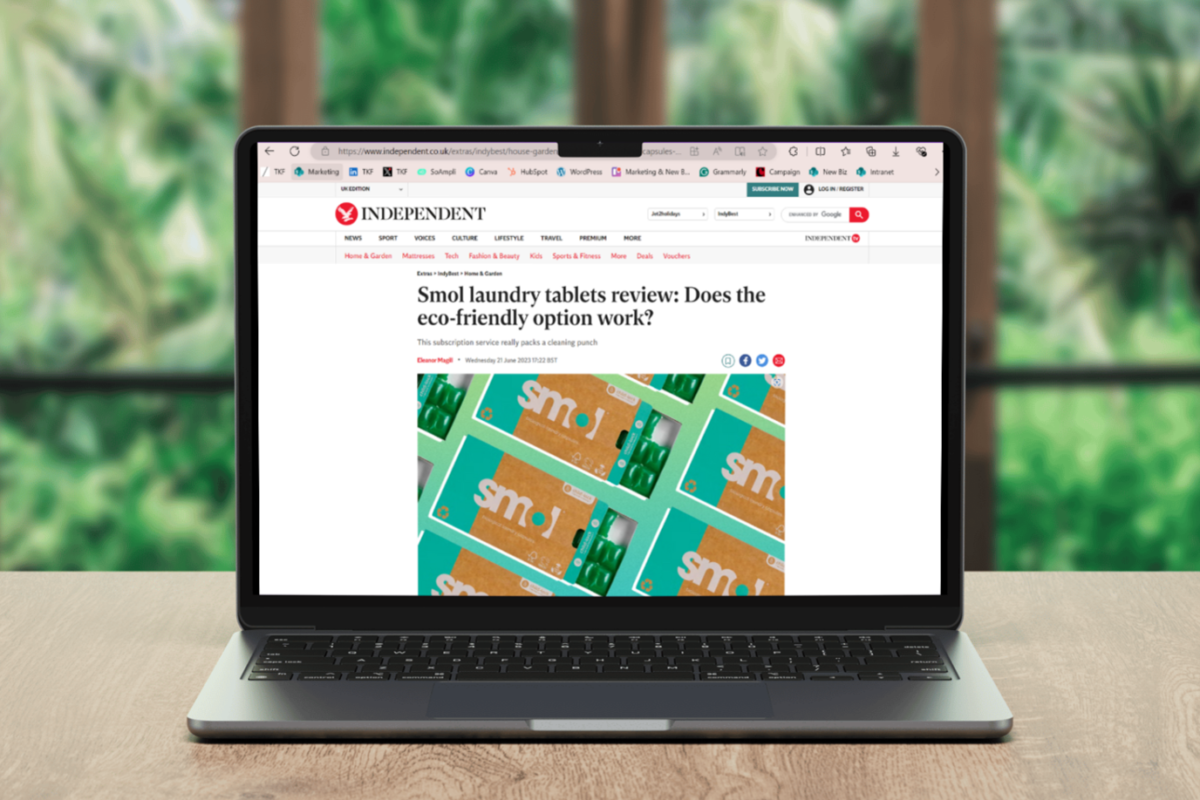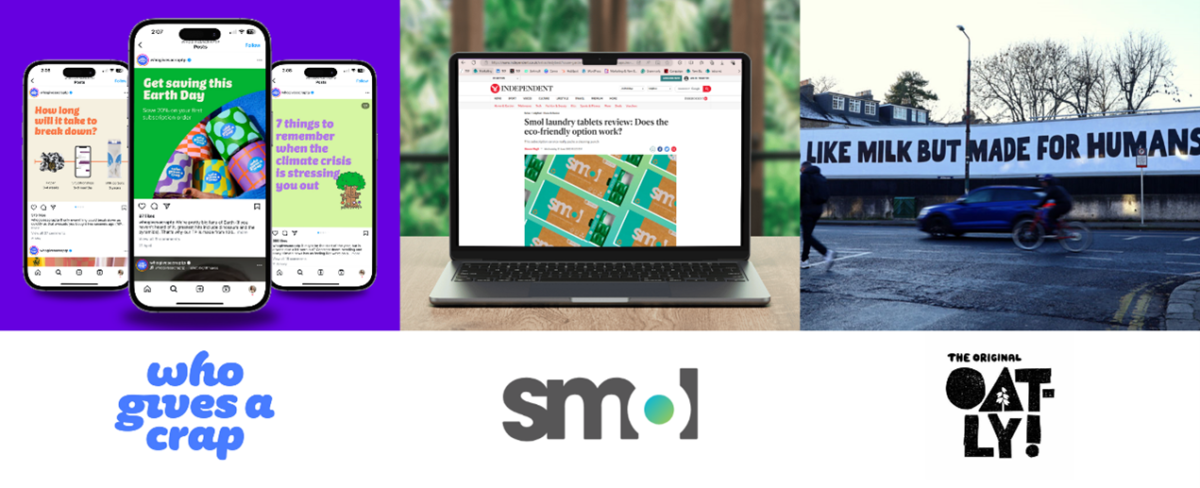By Senior Digital Account Manager Naomi Linturn
Climate change has long been a topic of conversation, but in recent years, it has taken prominence in the UK and globally as we strive to meet Net Zero goals. As the news coverage increases and temperatures continue to rise across the globe, one becomes more aware of the need for urgent change. The lack of action from governments and corporations, however, has led to the public taking matters into their own hands when it comes to their spending, with an increase in grassroots action highlighting that 66% of consumers now consider sustainability when making a purchase.
So, what does the ‘eco’ market look like? Well, in 2023, YouGov data suggested that 58% of UK adults agree with the statement, ‘I prefer brands that are sustainable’. Stats like this allow emerging brands the perfect opportunity to steal market share from ‘less sustainable’ brands.
This change in consumer mindset is also reflected in Google Search data, which found that there has been a 71% increase in online searches for sustainable goods globally (BND). This increase in demand can be noted on Google Trends data for ‘sustainability’ over the past five years:

We know it’s no easy feat to overcome attitudinal and fiscal barriers, with 43% of people claiming that financial constraints make shopping sustainably harder (Kantar), so using informative and clever media is key to overcoming these challenges. Brands need to execute marketing tactics to drive awareness, educate the public about the benefits of shopping eco, and ultimately drive sales across products with a more premium price tag.
In this article, we’ll examine how ‘eco’ brands are capitalising on these greener shopping habits. We’ll focus on three brands in particular, Oatly (an oat drink alternative to cow’s milk), Who Gives a Crap (bamboo toilet roll) and Smol (plastic-free cleaning products). The key business challenge for these brands is simple: How can we change consumer shopping habits and encourage the public to switch to more sustainable products and pay more to do so? We will look at how they are leading the way in the sustainability movement and how their Owned, Earned, Shared and Paid marketing strategies have enabled them to become household names within a short space of time.
OWNED MEDIA – Spread the green message.
The core value of our example brands is sustainability, so naturally targeting and messaging to promote eco USPs is essential. Who Gives a Crap are experts in telling a brand story, delivering high-quality video assets on owned social channels to drive awareness of their eco journey. Their assets are the perfect storytelling piece to educate viewers on the benefits of bamboo toilet rolls for both the consumer and the environment, particularly via their native TikTok ads that deliver high relevance and authenticity. These activations are ultimately going to help push the brand dial and drive that consumer change.

And this paid off in 2023, when Who Gives a Crap received over 10x more website searches than that of two other big players, Andrex and Cushelle, in the market, indicating a strong owned strategy here is key to driving authentic brand trust. (SimilarWeb)

EARNED – Build trust via PR.
Ultimately, to become a household name, brand trust is key. Building authentic brand awareness is important to drive consideration of your product and, ultimately, sales. For new products where awareness is low, and aforementioned barriers like fiscal considerations come into play, it’s extra important to gain consumer trust. Smol have worked hard to gain traction via PR across notable and trustworthy sites, from The Guardian to The Independent and Mumsnet, which has delivered a healthy boost for their earned media.

Looking at the past four years, Smol has climbed the ladder from an ‘unknown brand’ to an increasingly ‘relevant brand’, proving its success in becoming a key market player within a short space of time. (Google Trends)

SHARED – Go big.
To disrupt the market, Oatly offers a brilliant case study for the value of clever OOH, from 6 sheets to murals to stunts, they’ve grown the brand through an impressive host of activations. These activations not only drive awareness for the brand but also provide the perfect content for shared activations, which adds to the brand’s OESP strategy. The tongue-in-cheek nature of the content allows for the perfect social media sharing opportunities, with people amplifying the brand on Instagram and TikTok, often leading to viral posts that drive brand buzz even further!

Looking at YouGov data, approximately 20% 18–44-year-olds state that they are oat milk drinkers in 2024.

PAID – Tap into social media to reach Gen Z.
When it comes to encouraging consumer change, it’s key to target the right audience at the right time. Recent reports and surveys show that the younger generation is driving the sustainability movement and are willing to spend 10% more on green products (Forbes). So where better to reach these green shoppers than social media, where they are spending hours a day? (McKinsey). These brands know that social media is key, and have implemented successful digital strategies to tap into the likes of Meta and TikTok, with Who Gives a Crap and Smol dominating in their markets via paid full funnel activations.

To summarise, these brands have shifted the brand dial very quickly. Clever marketing strategies that align with consumer change and more eco behaviours have enabled them to hit their KPIs and ultimately own the market in a short space of time.
At TKF we work with a range of ‘sustainable’ or ‘green’ brands in order to deliver growth in a world that is becoming increasingly more aware of the need for consumer change. For our clients like Triodos, WaterAid and Friends of the Earth, we’re aligning sustainability goals with our media, and putting our money where our mouth is. As our industry continues to work towards Net Zero, this will be an interesting space to watch!
Sources:
- https://www.mckinsey.com/~/media/mckinsey/industries/retail/our%20insights/the%20state%20of%20fashion%202020%20navigating%20uncertainty/the-state-of-fashion-2020-final.pdf
- https://www.businessnewsdaily.com/15087-consumers-want-sustainable-products.html
- https://www.forbes.com/sites/gregpetro/2021/04/30/gen-z-is-emerging-as-the-sustainability-generation/
- https://www.mckinsey.com/mhi/our-insights/gen-z-mental-health-the-impact-of-tech-and-social-media
- https://www.kantar.com/company-news/the-rise-fall-and-rise-again-of-eco-active-consumers
- https://pro.similarweb.com/
- https://trends.google.com/trends/
- https://platform.yougov.com/
